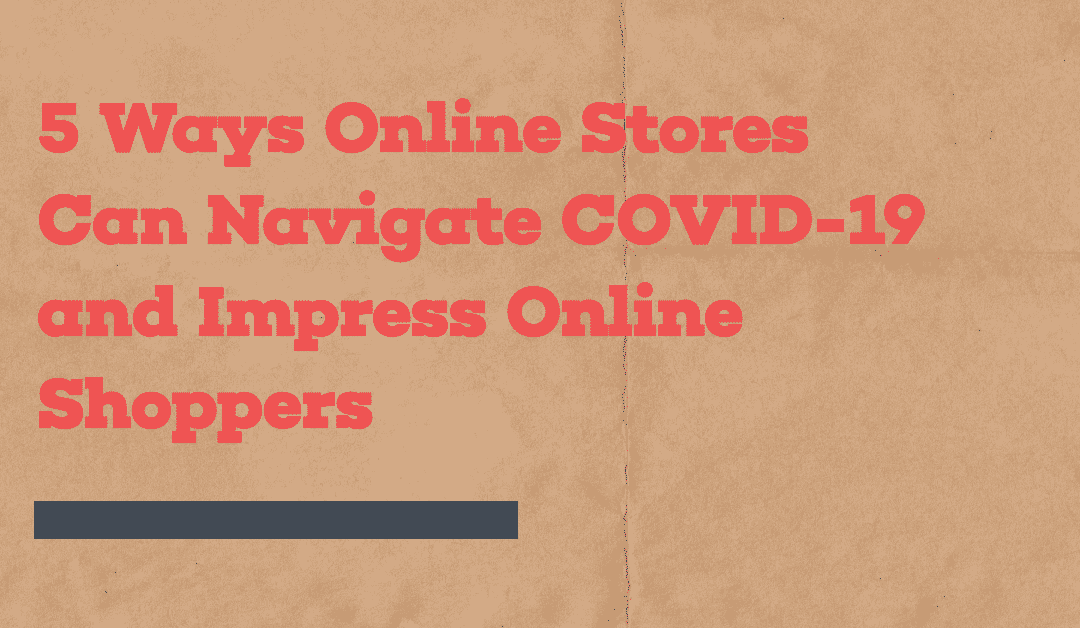
Jan 7, 2021 | Best Practices, Blog, Fulfillment, Warehouse Management Software, Warehouse Operations
5 Ways Online Stores Can Navigate COVID-19 and Impress Online Shoppers
Even as the holiday decorations go back into storage and Mariah Carrey retires her microphone for another 11 months, business is still ba-hooming for online brands and retailers. With the encroaching cold of January and talks of more lockdowns on the horizon, more and more shoppers are turning from their old brick-and-mortar ways, to finally enter the new era of online shopping.
As online brand owners and digital retailers, we owe these potential new customers a great first impression into the online shopping community. So let’s look at five things you can do to delight your new and existing customers as they evolve to meet the new world around them.
Fulfillment at the Forefront
Someone has to say it. In today’s understatedly hectic marketplace, with traditional carriers like USPS, UPS, FedEx and even Amazon stretched to their limits due to the massive surge in online shopping, the most important step you can take during right now to secure the success of your online store is to solidify your Fulfillment strategy AKA make sure that customers can actually get your product.
At a time when market uncertainties and shopper anxieties are at an all time high, online retailers must take every precaution to retain their customers’ trust. Retailers that have relied solely on traditional carriers or FBA (Fulfillment by Amazon) in the past are now finding resiliency in their operation by diversifying their shipping methods and outsourcing to third party logistics (3PL) companies.
3PL companies easily handle warehousing, forwarding, packing, consulting, order fulfillment, brokerage and transportation documentation, while offering fulfillment management software that seamlessly integrates into your business systems; e.g., Shopify.
Not only that, high shipping costs and long shipping durations are the leading factors in stopping people from purchasing online. Online stores that have been able to reduce both are realizing immense competitive advantages and quickly growing their customer base, as would-be brick-and-mortar customers are confidently becoming online shoppers.
Whether you are just starting an online business or already operate a successful brand, prioritizing your fulfillment strategy is the #1 way to navigate the ecommerce realm during the COVID-19 pandemic.
Know Your Customer Base and How It’s Changing
You may have already noticed, but customers have been forced to change their shopping habits quite a bit. According to a study by JP Morgan, e-commerce now accounts for 16.1% of all U.S. sales, up from 11.8%, and news outlet BBC reported that COVID-19 has effectively eliminated the marginal store revenue accrued through a customer browsing in-person.
What this means is that online retailers need to have a clear picture of their online shoppers and their in-store shoppers, as well as how both of them engage with the digital store. You may already know your customers and have well-defined customer segments and demographic information, so you mustn’t reevaluate who they are, but rather how they now act.
Traditionally, technologically-native shoppers in the Gen Z or Millennial generation have been more inclined to browse in-store followed by purchasing online, while the older generation has statistically favored in-store transactions. COVID-19 has flipped this mantra for some, especially those that are less willing to venture out to shop.
So be sure to understand who is visiting your site now that wasn’t before. You may be welcoming new shoppers that could get frustrated with complicated browsing and checkout processes, or perhaps your customers are engaging with your brand in an entirely new way.
Optimize Your Shopping Journey
Since online shoppers lack the ability to physically touch, try on, and compare items, they may need more product information to feel comfortable completing a purchase. Not only that, customers will be less likely to return a product that is accurately displayed on your store.
For that reason, consider implementing the following to provide the most accurate information to your customers:
- Clear sizing charts
- Product comparison tools
- High-quality product images, including dimensions and materials
- Customer reviews
Once your customer decides to purchase, make it as easy as possible with a frictionless checkout process. Up until now, the majority online shoppers have been technological natives (i.e., younger), so many retailers may have settled on overly-complicated websites that rely on the customer being tech savvy.
Be aware that new online shoppers could get frazzled by complexity and subsequently abandon the checkout process when it loses them. To avoid this from happening, reevaluate your user journey from landing page to checkout confirmation, paying special attention to:
- Product categorization
- Product page layout and information
- Personal information collection
- Cart view and editing
- Payment, shipping and return options
Customer support options like a live chat box needs to be clearly visible so the customer can reach out if they need assistance. Additionally, consider using heat-mapping or other anonymous tracking tools to find where exactly customers are getting frustrated and abandoning the process. This method of discovery along with design and testing is an important way to improve the user experience (UX) of your shopping journey.
Manage Your Returns, Don’t Let Them Manage You
Returns are the unavoidable fallout of online shopping, and the best thing online companies can do is to prepare for them to happen. In our past blogs we’ve detailed the rising number of returns and how online retailers can turn returns into a profitable venture.
When making an online purchase, your brand’s return policy is often the very first thing a customer will look for, along with your shipping options and data privacy policy. So make sure your returns policy is highly transparent and overly generous.
Beyond that, a smooth returns process creates loyal, repeat customers. Be sure to give your customers the ability to, at a minimum, print labels, track their returns, and know the status of their refund.
Refunds are a messy business, and that’s why many 3PLs like ShipHero are partnering with returns management companies like Returnly to automate the return process including the issuance of credit/refund, to make it as easy as possible for the retailers and their customers.
Stay in Touch With Your Customers
The most effective way to weather a crisis and maintain relationships is to keep sustained communication with your customer base, according to Harvard Business Review. In times of chaos, customers may seek to know how your brand is responding, and determine if their brand loyalty should remain. HBR suggests the following approach to communicating with your customer base during a crisis, and it has a lot of HEART.
- Humanize your company
- Educate about change
- Assure stability
- Revolutionize offerings
- Tackle the future
By following the above five recommendations, your brand will be sure to win your fair share of the growing number of online shoppers, whether it’s their first time or their millionth.
Ready to tackle fulfillment for your online store? ShipHero is a leading provider of SaaS 3PL software for ecommerce fulfillment that is trusted by over 4000 ecommerce brands and 3PLs every day.
Learn more about ShipHero’s industry-leading warehouse management software.
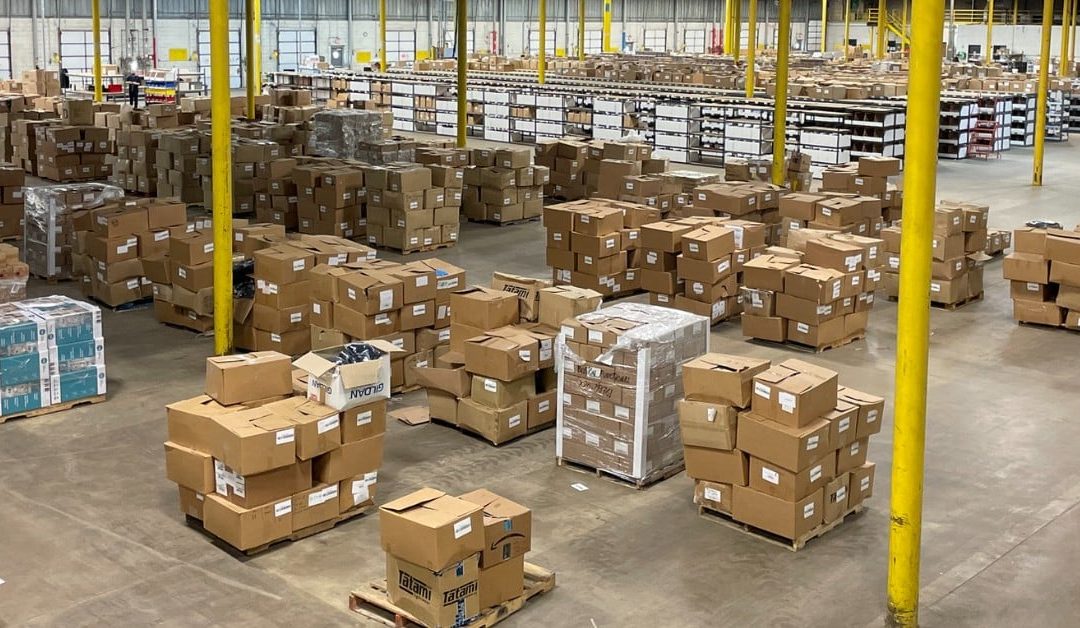
Jan 13, 2021 | Best Practices, Blog, Fulfillment, Warehouse Operations
“Necessity is the mother of Invention.”
–Plato, philosopher
“When Necessity rapidly consumes the globe in a pandemic, Invention calls its brother Fulfillment.”
–ShipHero, fulfill-osopher
While our shipping quotes may be better than our written quotes, the principle holds true: a good product is only as good as its ability to reach customers. A bird in the hand is worth two in the bush… okay, no more proverbs.
At its onset, the global pandemic caused a shortage of goods that people relied on with no way of receiving them. But then came the shift to digital, and the ecommerce industry saw tremendous growth. When more people started sending more things, we in the ecommerce fulfillment industry experienced growth of our own.
Fulfillment as a Service (FaaS) companies like ShipHero began partnering with online brands to provide fast and reliable fulfillment services powered by SaaS-based fulfillment software. In under a year, ShipHero became trusted by over 4,000 ecommerce brands and 3PLs every day to get their products in the hands of their customers, on time and on budget with their Warehouse Management Software (WMS).
How did we obtain and manage such high-speed growth? The answer lies in our steadfast set of criteria that we developed to know when the time has come to expand our operations, and through what means. Let’s dive into this Warehouse Buying 101 guide, so you can understand when and how to grow your own network of warehouses.
Know When To Expand
We’ve found that taking a data-driven approach is essential to know when to expand your operations. Through real-time data monitoring and executive oversight, we get the right data to the right people to make the best possible decisions.
We know it is time to expand our operations when one of the following occurs:
- We reach physical storage limits for inventory
- We reach shipping capacity, in terms of the number of orders that can be shipped in a day
- We recognize regional bottleneck trends, e.g., a distribution center on the East Coast is frequently shipping to the West Coast
We let our business tell us when it is time to expand, not the other way around.
Make sure you are tracking the right data, like ‘Miles Travelled per Order’ or ‘Time to Fulfill’ in order to assess the state of your operations before expanding. Because adding new warehouses to your network can be expensive and very difficult to undo, you need to ensure that there are no simple fixes for your current fulfillment woes.
Expansion Strategy
Once you are certain that it is time for 3PL to grow its network of warehouses, the next step is to analyze your options and choose the strategy that best satisfies your needs. It is through in-depth research and quality information that allows ShipHero to make smart decisions.
Step 1: Determine Location
Location, location, location (technically not a proverb).
For ecommerce fulfillment, choosing the right location for your warehouses makes all the difference. Having a widespread network of warehouses improves the cost-efficiency and speed of your order fulfillment, but having multiple operations in one area provides resiliency.
Understand where your brand and your brands’ customers are located. What is the competition in that area? Is there an airport nearby and how are the road conditions for trucks? Does the area have an adequate talent pool to employ and run your operations smoothly?
By determining your location, this allows you to set a more defined area to search for expansion opportunities.
Step 2: Understand Timing
Are you looking for immediate expansion to solve an urgent need, or is this a long-term decision to ensure future success? Why are you expanding now? What are the underlying forces that are driving your growth, and will they still be there in the future?
By understanding your timing, this helps you align to your long-term business goals and mitigate risks caused from short-term thinking.
Step 3: Set Expectations for Cost
How much are you willing to invest? How much free capital can you afford to spend? Think in terms of proportions of your current and projected orders.
Knowing where you want to expand, how quickly, and how much you are hoping to spend will give you all the information for the final step.
Step 4: Execute Expansion Method
With the above considerations in mind, the final step is to execute your desired expansion method. ShipHero has employed a blend of the following strategies to successfully and quickly grow their network of warehouses:
Build from Scratch
The first strategy is to set up a brand new warehouse. As the most time consuming option, ShipHero is able to spin up a brand new warehouse in 30 days, which we did recently in our Pennsylvania warehouse (now hiring). It is also the most costly option, but allows for the greatest level of autonomy in running your operations.
Partnership with Existing 3PL
Existing 3PL companies that have additional capacity to spare may contractually agree to fulfill your customers’ orders for a percentage of the profits. Partnering with an existing 3PL is the fastest way to add capacity to a certain region, so if you are in a time crunch to start getting orders out the door, this is a smart way to go.
Keep in mind, with regards to quality of service, your company will wholly rely on the existing 3PL to deliver, so make sure you partner with the 3PL that matches your standards of excellence.
Buyout an Existing Operation
If there’s a suitable candidate, buying an existing operation is a great way to expand your network. For example, ShipHero recently purchased Radio Shack’s DFW Fulfillment Center, and because they already used our software, we began fulfilling ShipHero orders practically overnight.
Transitioning an existing operation to suit yours is less costly and time-intensive than building a warehouse from scratch, and it allows more autonomy and capacity than a partnership. So keep an eye out on your existing partners or your clients, as they may become a good target for acquisition.
This concludes our Warehouse Buying 101 tutorial, and we hope that you can use it to expand your operations and effectively fulfill on behalf of your online brands and retailers. And if you’re looking to unlock your ecommerce fulfillment superpowers, ShipHero is a leading provider of SaaS 3PL software for ecommerce fulfillment. We give you the tools to quickly master your ecommerce operations with a cloud-based software solution trusted by ecommerce and retail brands of all shapes and sizes.
Learn more about ShipHero’s industry-leading warehouse management software.
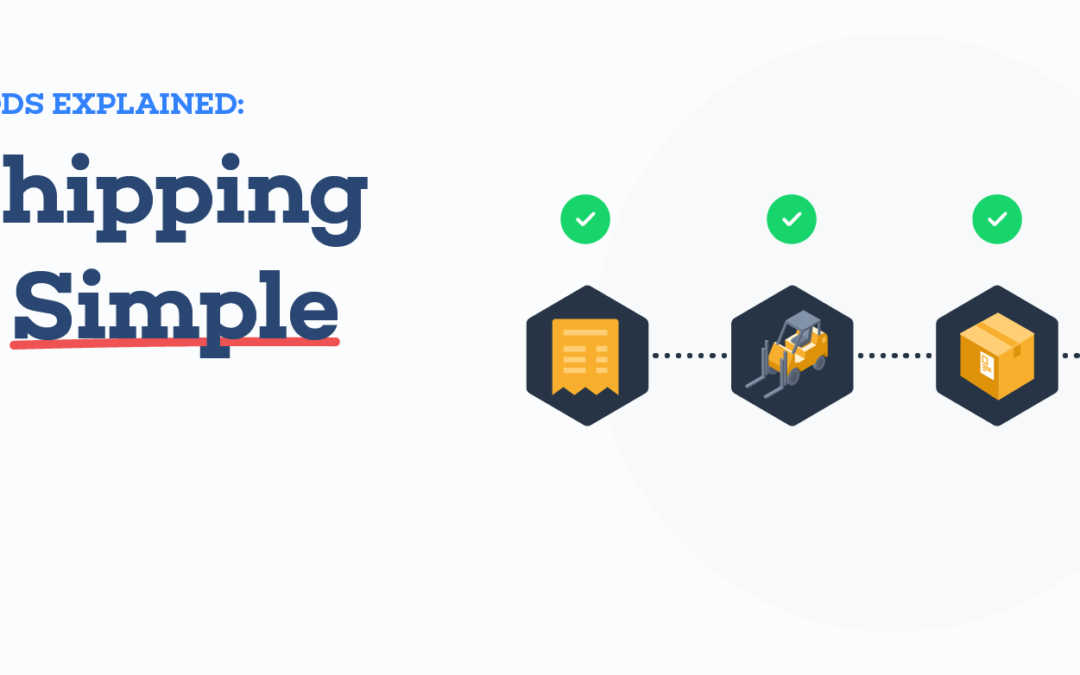
Jan 27, 2021 | Best Practices, Blog, Fulfillment, Warehouse Management Software, Warehouse Operations
Welcome to our Shipping Methods Explained blog series. In this series, we will deep dive into fulfillment methods – that is, how businesses fulfill their online orders and get products to their customers.
Sounds simple right? Well, in theory it is. You could hop on your itty-witty bicycle and hand-deliver your product, mission accomplished. But consider the complexity when your company fulfills hundreds to thousands of orders daily, not to mention the skyrocketing shipping costs that could price you out of the market.
Managing inventory, navigating each carriers’ specific requirements, calculating the lowest cost from thousands of shipping options… it’s a daunting task. That’s why more and more businesses are outsourcing their fulfillment methods.
Are you ready to outsource your fulfillment? Let’s analyze your options to help you decide the best method for your business. In this article, we’ll discuss Dropshipping. What is dropshipping? What are the pros/cons? When is it right for my business? Let’s dive in.
(And be sure to check back for future articles where we’ll cover even more fulfillment methods)
What is Dropshipping?
Dropshipping is the term used when a product is shipped directly from a manufacturer, supplier, or wholesaler, bypassing the retailer that made the sale entirely.
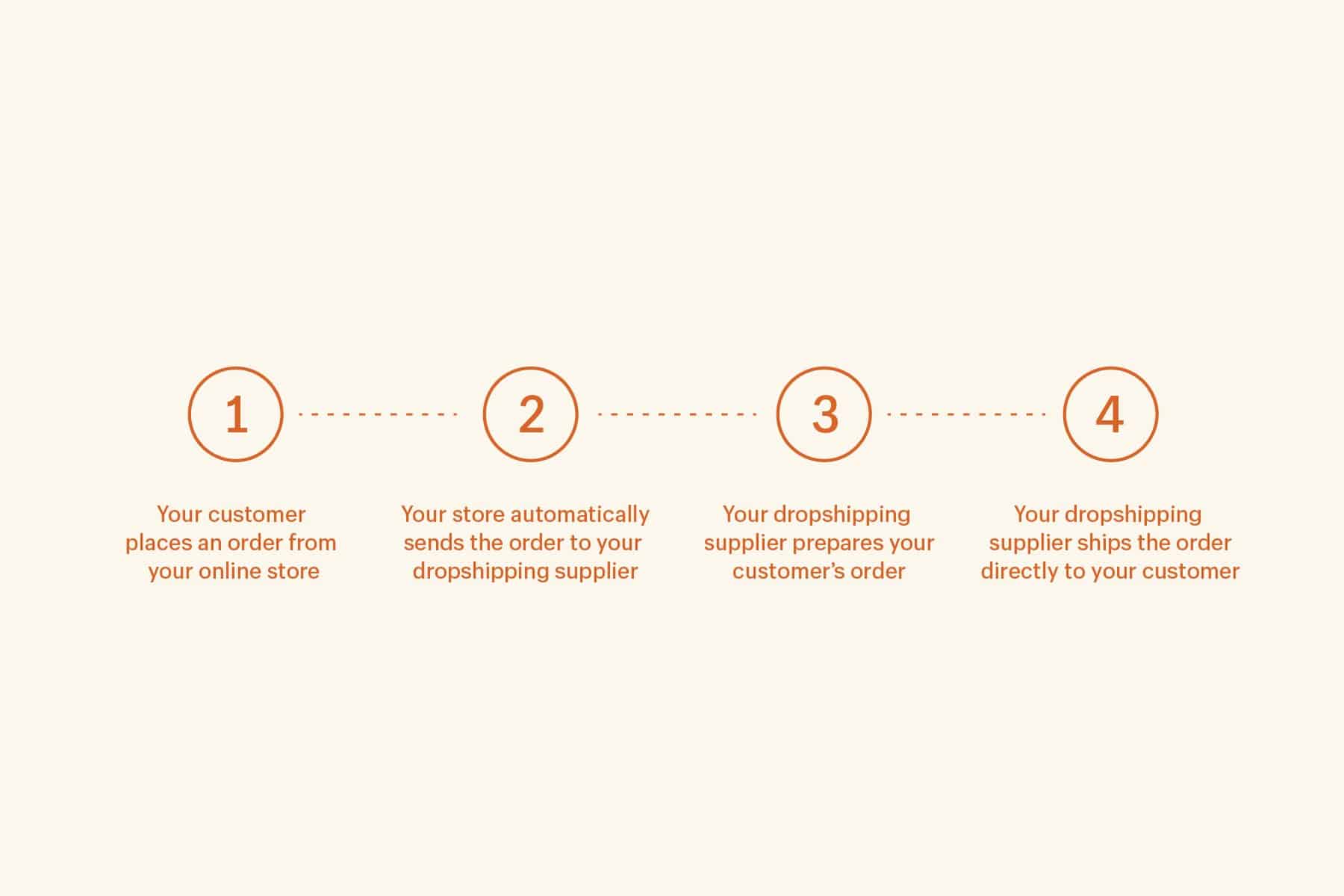
SOURCE: https://www.shopify.com/blog/what-is-dropshipping
- A customer visits your company’s website and purchases an item.
- Your website automatically notifies the dropshipping supplier
- The dropshipping supplier receives the order info and customer’s shipping information
- Your dropshipping supplier fulfills the order directly
How to Start a Dropshipping Business
Dropshipping businesses are extremely common nowadays, due to the allure of making a passive income matched with the simplicity of setting up a dropshipping business. All it takes is 3 easy steps to get you on your way.
Step 1: Choose a Product/Niche
The first step you take in starting a dropshipping business is to choose what you are going to sell.
Your product could be a brand new gadget, or a low-cost version of a luxury item, or a luxury version of a low-cost item. As long as there is a market for it, there are no wrong choices here. So do your due diligence and find a product that you think you could sell. ABC… Always be closing.
Step 2: Find a Dropshipping Supplier
Once you choose your product, find a dropshipping supplier.
You can search a supplier database like Dropship Direct, Alibaba, or AliExpress. (Although be sure to stay up-to-date on news concerning Chinese dropshipping providers)
Alternatively, you can use an integrated supplier directory. This means that when you build your online store, say in Shopify (see Step 3), the dropshipper will be linked directly to your online store.
Shopify recommends the easiest integration is with the Oberlo marketplace. From here, choose from millions of products and upload them directly to your store.
Step 3: Build Your Online Store
After you have your product and supplier, have some fun building your online store! This will serve as the grand entrance to your brand.
Websites like Shopify, Wix and 3DCart allow you to build your online store from scratch, or select from pre-made templates. When choosing between your options, make sure your choice gives you the ability to easily integrate with your dropshipping supplier.
When designing your store, keep in mind who your target audience is, and build your website to reflect their wants and needs. Not just in appearance, but in website functionality. You can turn customers into repeat shoppers through a convenient and fluid shopping experience.
Dropshipping Pros and Cons
Is dropshipping right for your business? Or would you benefit from a third-party logistics provider or another fulfillment method? Let’s look at the pros and cons of dropshipping so you can decide for yourself.
Dropshipping Advantages
Dropshipping is the perfect business model for those that want to earn a passive income. It’s simple to start, with little to no cash investment. You can quickly test your ideas with limited risk to you. The three main advantages to dropshipping are:
Less Capital is Required
Dropshipping eliminates the need to invest heavily in inventory, warehouse fees, transportation fees, etc. so anybody with a laptop and a dream can start an online business.
Able to Offer Wider Range of Products
With dropshipping, you don’t have to purchase inventory until the sale is made, which significantly reduces the risk to you. So this gives you freedom to offer a large array of products on your site.
Simple to Start
With companies like Shopify that basically make the entire process a drag-and-drop activity, starting an online business has never been easier.
Dropshipping Disadvantages
The pros listed above explain why so many people have started an online dropshipping store, and why they use dropshipping to expand their product lines. But for the very same simplicity and low costs that attract these entrepreneurs, dropshipping also presents a set of challenges.
Low Profit Margin
Because the barriers to enter the dropshipping market are very low, the competition is fierce. Having many sellers in the market pushes down the cost as they compete with each other. Sure, you can differentiate based on branding, customer service, etc. but at the end of the day, $$$ talks.
Little to No Customization
Because you are at the will of your supplier, they rarely offer any customization to your products, your packaging, or your unboxing experience. Say you want to make the slightest tweak to the look of your item, or you want to pack it a certain way or in a bundle, this will most likely not be possible.
Some Alibaba dropshipping suppliers will accommodate and customize, but even then, they fully control the product and could even turn around and sell your customized goods to the next retailer.
Little to No Control
You entrust the entire fulfillment process to the supplier, and accept the quality of service that they provide. If there are errors or mistakes, you cannot blame your supplier and it will be your brand that pays the price. Maybe not in dollars, but certainly in reputation.
So, is dropshipping right for your business? If you’re not sure, stay tuned for our next article as we dive into third-party logistics (3PL) and fulfillment providers like ShipHero.
Learn more about ShipHero’s industry-leading warehouse management software.
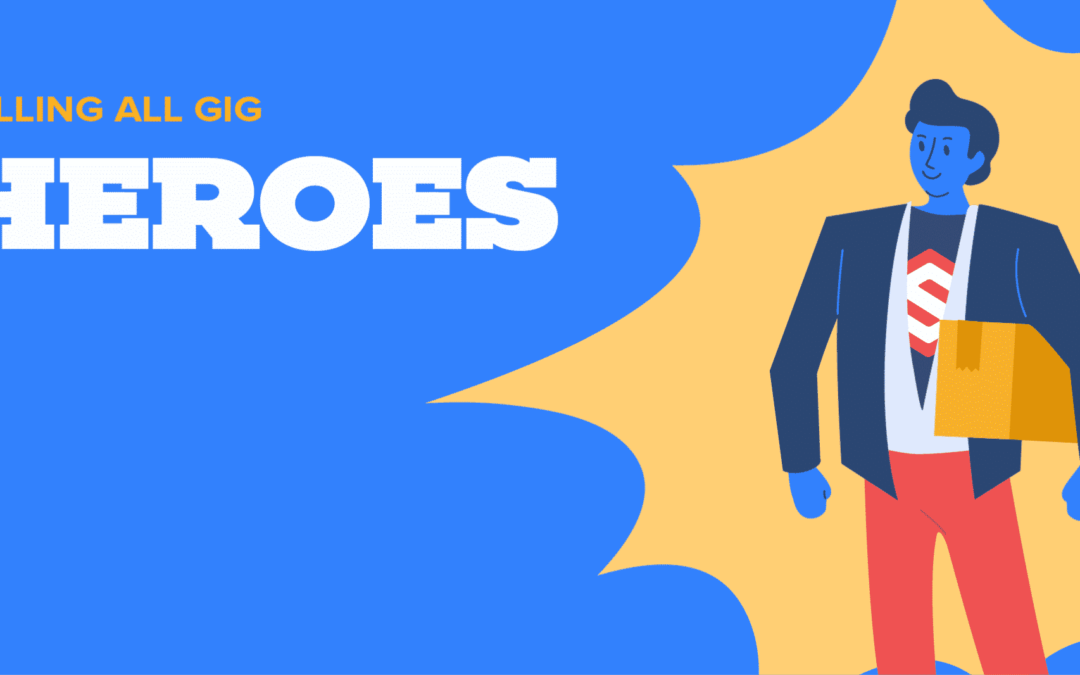
Feb 3, 2021 | Best Practices, Blog, Warehouse Management Software, Warehouse Operations
By all accounts, gig workers are redefining the American Dream. To date, over one third of Americans take advantage of the Gig Economy to enjoy the freedom of setting their own work schedule and chasing projects that resonate with their passions.
There is only growth for gig workers forecasted on the horizon.
While US regulations are finally catching up to the speed at which the Gig Economy continues to grow, more and more major companies are adding freelancers and gig workers to their workforce at varying positions and ranks, up to about two thirds of major companies currently. And 80% of companies are planning to make the switch to independent work in the coming year.
Specifically, several sectors like the warehouse and ecommerce fulfillment industry are ramping up their use of gig workers due to the flexibility and expertise that they provide. Not only that, gig workers in these industries are constantly being offered full-time work if they need more stability. There’s just too much work in ecommerce fulfillment right now.
Gig workers have more control of their work life now more than ever.
Greater acceptance of remote work has proven to be a win-win situation for gig workers. That’s because their work can now transcend the boundaries of where they can physically show up to work, and at the same time, the demand for work that does require in-person attendance is only skyrocketing.
With the advent of staffing platforms like Indeed and AngelList, it’s never been easier for businesses to find and team up with quality and trusted independent workers. This has led to many predictions that virtual organizations and solely-online retailers will continue to rise through the consistent employment of gig workers.
Gig workers are always adept at finding that next big project.
76% of gig workers claim satisfaction in their work life, despite the pressure to continually find projects. But perhaps it is this pressure, rising to the challenge, designing a personal work style and life, that entices gig workers to this style of work in the first place.
Today, 15% of independent workers have side-gigs, and with services like Indeed and ecommerce platforms like Shopify that allow people to market and sell their services and goods like never before, this proportion is sure to grow.
Are you a Gig Hero?
We at ShipHero are seeking gig workers to become Gig Heroes at our warehouses as Pick-and-Packers and fulfillment specialists, because we value the expertise and flexibility that they bring to a work environment. We are currently hiring experienced warehouse team members to join our team to help us pick, pack & ship orders in our 150,000 sqft warehouse in our network in Pennsylvania. You’ll be part of a team that helps ship over $5 billion of e-commerce orders a year, and there’s always options for full-time employment.
Learn more about ShipHero’s industry-leading warehouse management software.
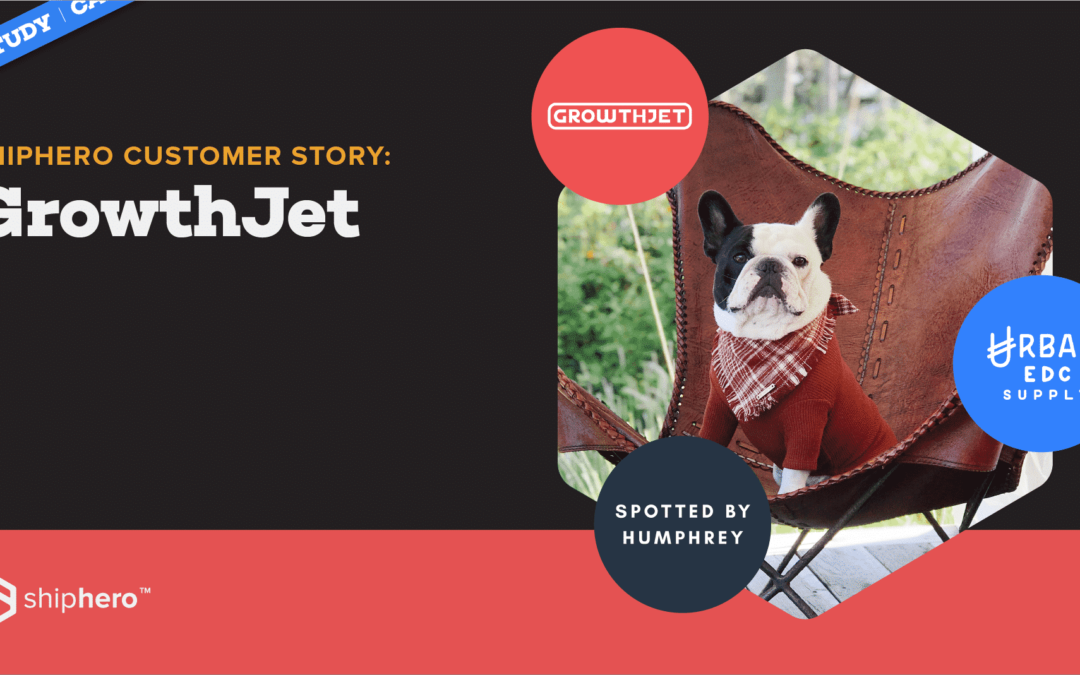
Feb 18, 2021 | Blog, Case Study, Warehouse Management Software
Move over Air Bud… Humphrey the French Bulldog may not be able to sink a three pointer, but he can sell dog accessories while saving the planet like it’s nobody’s business. Except, it is his business! Enter: Spotted By Humphrey — a specialty dog boutique with a playfully curated selection of thoughtfully-designed, well-made, premium dog accessories, which comes along with a promise of net-neutral climate emissions.
Spotted By Humphrey – “with its quirky name for a shop that has the personality to match” – is a community-driven online destination for dog parents around the world who are looking to find something special and unique for their dogs.
Humphrey aka Spotted Humphrey (@spottedhumphrey) has over 120K followers on Instagram, and is the inspiration behind the business, as founders Sandy and Yong-Soo Chung (also Humphrey’s parents) wanted to create a shop that would make the experience of shopping for your dog just as fun and community-oriented as Humphrey’s Instagram.
Naturally, social media plays a key element in the shop’s marketing strategy; however, both Sandy and Yong-Soo believe that their success largely comes from establishing a strong operational foundation, which ultimately creates a better experience for their customers.
Having founded his own ecommerce shop Urban EDC Supply prior to the launch of Spotted By Humphrey, Yong-Soo leveraged his existing ecommerce experience to establish Spotted By Humphrey, which Sandy has taken on and grown organically ever since. Yong-Soo eventually founded an all-encompassing ecommerce brand accelerator with the first ever net-negative carbon emitting 3PL in the industry, so every shipment that goes out actually benefits the planet instead of harming it.
“Frustrated by the lack of accountability and execution, I decided to take fulfillment in-house. First, we used another WMS other than ShipHero. It was slow, we had a lot of mis-shipments, and it was difficult tracking inventory. When I finally stumbled upon ShipHero, it was a game changer. The software was intuitive to use and it had a lot more features that made it easier to streamline our fulfillment operations.”
— Yong-Soo, Founder and CEO of GrowthJet
Yong-Soo utilizes ShipHero’s warehouse management software across his ecommerce brand accelerator, GrowthJet, along with his two internal brands, Spotted By Humphrey and Urban EDC Supply, a boutique everyday carry shop. So we asked Humphrey and Yong-Soo to ‘sit, stay and roll over’ what made ShipHero the right choice for his business.
ShipHero: Humphrey, tell us about your business(es).
Humphrey: OUAF OUAF!
SH: Ah, I don’t speak French. Yong-Soo, care to translate?
Yong-Soo: “In a nutshell, GrowthJet is an ecommerce brand accelerator with two internal brands, Urban EDC Supply (launched 2015) & Spotted By Humphrey (launched 2018).
Urban EDC Supply is an everyday carry shop with a strong focus on the EDC and knife community. We collaborate with world-renowned designers like Jesper Voxnaes to create stylish and functional everyday carry gear for our community of gear enthusiasts. Taking a page out of the streetwear clothing culture, weekly drops feature a limited supply of exclusive goods that sell out within hours, and sometimes minutes, or even a few seconds. While there’s a wide range of goods available for sale, some of these high-end collectibles can sell for as much as $2,000.
Spotted By Humphrey is a specialty dog boutique inspired by our french bulldog, Humphrey. As of today, Humphrey has 120k followers (@spottedhumphrey) on Instagram. We wanted to create a shop that would make the experience of shopping for your dog fun and community-oriented. Sandy and Humphrey made an appearance on the first episode of Shopify’s “Guess My Hustle” series (produced by Portal A, an award-winning digital studio), as well as Shopify’s “New Money” series (episode titled, “How To Make Money In The Million Dollar Dog Accessories Industry”).
Having built two fast-growing brands, in 2019, several colleagues approached us asking about our product photography, our fulfillment operations, and other e-commerce related ops questions. We decided to build and launch GrowthJet as the backbone infrastructure support to grow e-commerce brands. We’ve been growing very quickly through word-of-mouth ever since.”
SH: During your journey, you went from using a third party logistics (3PL) provider to fulfilling on your own. What was the catalyst for this switch?
Yong-Soo: “When I launched Urban EDC Supply back in October 2015 from my one-bedroom apartment in San Francisco, I did a tremendous amount of research on finding the best 3PL. After weeks of digging in, I settled on a 3PL that was based here in the Bay Area, and one that had the best reviews and ratings.
Unfortunately, I had one of the most frustrating experiences with this particular 3PL. I lost close to $5,000 worth of inventory due to negligence by the fulfillment staff. There was one particular instance where one of the employees opened up the box that was being shipped to my customer, took the item out, and then shipped out an empty box to my customer in Alaska. It turns out that this particular employee’s last day was the next day. When confronted with this news, the employee never returned to collect his final paycheck the next day.
Frustrated by the lack of accountability and execution, I decided to take fulfillment in-house.
SH: Sounds like they were in the doghouse, eh Humphrey?
Humphrey: RUFF!
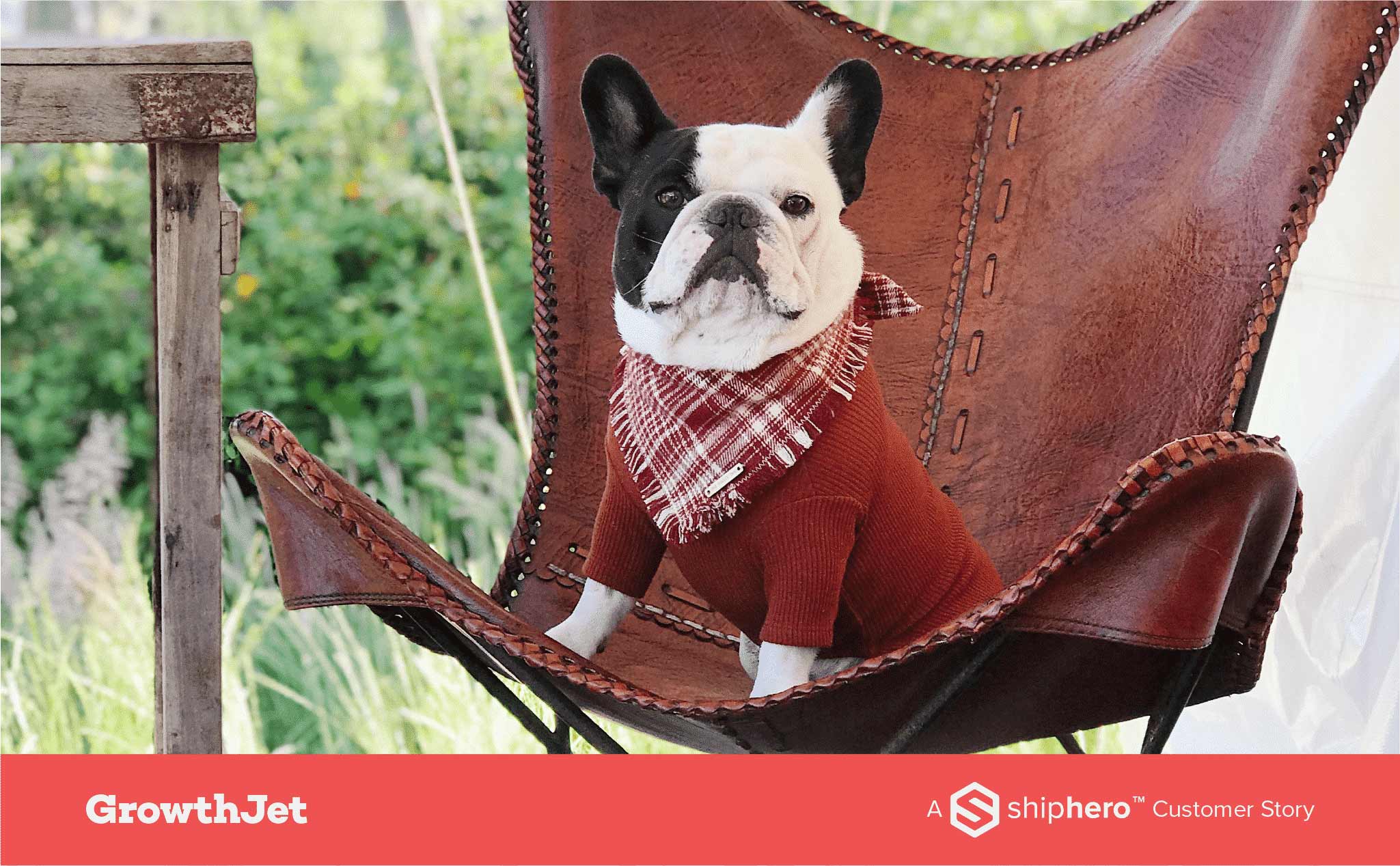
SH: Too true, too true. So when you were searching for WMS solutions, what were your main fulfillment goals?
Yong-Soo: “When we took fulfillment in-house and launched GrowthJet, the main goals were to improve order accuracy through proper barcoding, speed up the process of fulfillment, and generally, have more accountability and insight into our shipment data.
For us, the [most important criteria] was our ability to have an open dialogue with our fulfillment center. When we needed something, calling a phone number and being greeted by a “voice mailbox is full” message is never fun. Neither is sending out an urgent support email and not receiving a response for over a week. So for GrowthJet, we made it a point to be transparent and open to communication. Also, the ability to flex and work collaboratively with the 3PL is an important part of what we do at GrowthJet.”
SH: And why did you choose ShipHero?
Yong-Soo: “First, we used another WMS other than ShipHero. It was slow, we had a lot of mis-shipments, and it was difficult tracking inventory. When I finally stumbled upon ShipHero, it was a game changer. The software was intuitive to use and it had a lot more features that made it easier to streamline our fulfillment operations.
Integrating ShipHero was relatively easy, especially with one of the Solutions Engineers Matt D. helping us.”

First, we used another WMS other than ShipHero. It was slow, we had a lot of mis-shipments, and it was difficult tracking inventory. When I finally stumbled upon ShipHero, it was a game changer. The software was intuitive to use and it had a lot more features that made it easier to streamline our fulfillment operations.
SH: Every ShipHero customer is assigned a Solutions Engineer to help simplify the onboarding and integration process because we look after our customers, dawg.
Humphrey: …
SH: So what was your inspiration for the climate neutral pledge, and how do you plan to become a Carbon Negative 3PL?
Yong-Soo: “When we launched GrowthJet, we realized how bad the waste and carbon footprint is for logistics and fulfillment. We think a lot about ecosystems not only for the environment, but the entire lifecycle of every item that comes through our warehouse including packaging materials, pallets, used equipment, etc.
We want to reduce as much as possible, then reuse, then recycle what we can before we decide to throw something away. Even then, we offset the carbon footprint of our garbage by purchasing carbon credits through ClimateNeutral.org.
On top of our Climate Neutral certification, we will be implementing our own tree-planting initiative in 2021. As far as we know, we will be the first carbon negative 3PL in the world. This means that for every package we ship out for our brand partners, we’re actually helping our planet fight against climate change. Counter-intuitive, isn’t it?
SH: Planting trees to help climate change, care to comment Humphrey?
Humphrey: BARK!
SH: Surprisingly on topic. And what has been the response from your customer base?
Yong-Soo: “Overall, the response from our brand partners has been very positive. They love and appreciate our proactive commitment to saving our planet, rather than being part of the problem. We’re also different from most 3PLs in that we’re more selective about who we bring on as a partner. We want to make sure we’re aligned on values first and foremost. Like any relationship, it’s a two-way partnership. We have a bias for thinking long-term so we want to make sure there’s a fit first before making a long-term commitment.”
SH: Finally, how has your business been impacted by the COVID-19 pandemic and lockdowns?
Yong-Soo: Our business actually saw an increase due to COVID. With e-commerce getting a huge boost, we were fortunate to be in a position of leverage during the pandemic. Of course, there were additional costs such as PPE equipment and being more cognizant of social distancing within the warehouse, but all in all, we feel very lucky to come out of the pandemic stronger than before.
SH: Amazing, thank you for sharing your story and allowing us to write this case study. Humphrey, final thoughts?
Humphrey: WOOF WOOF!
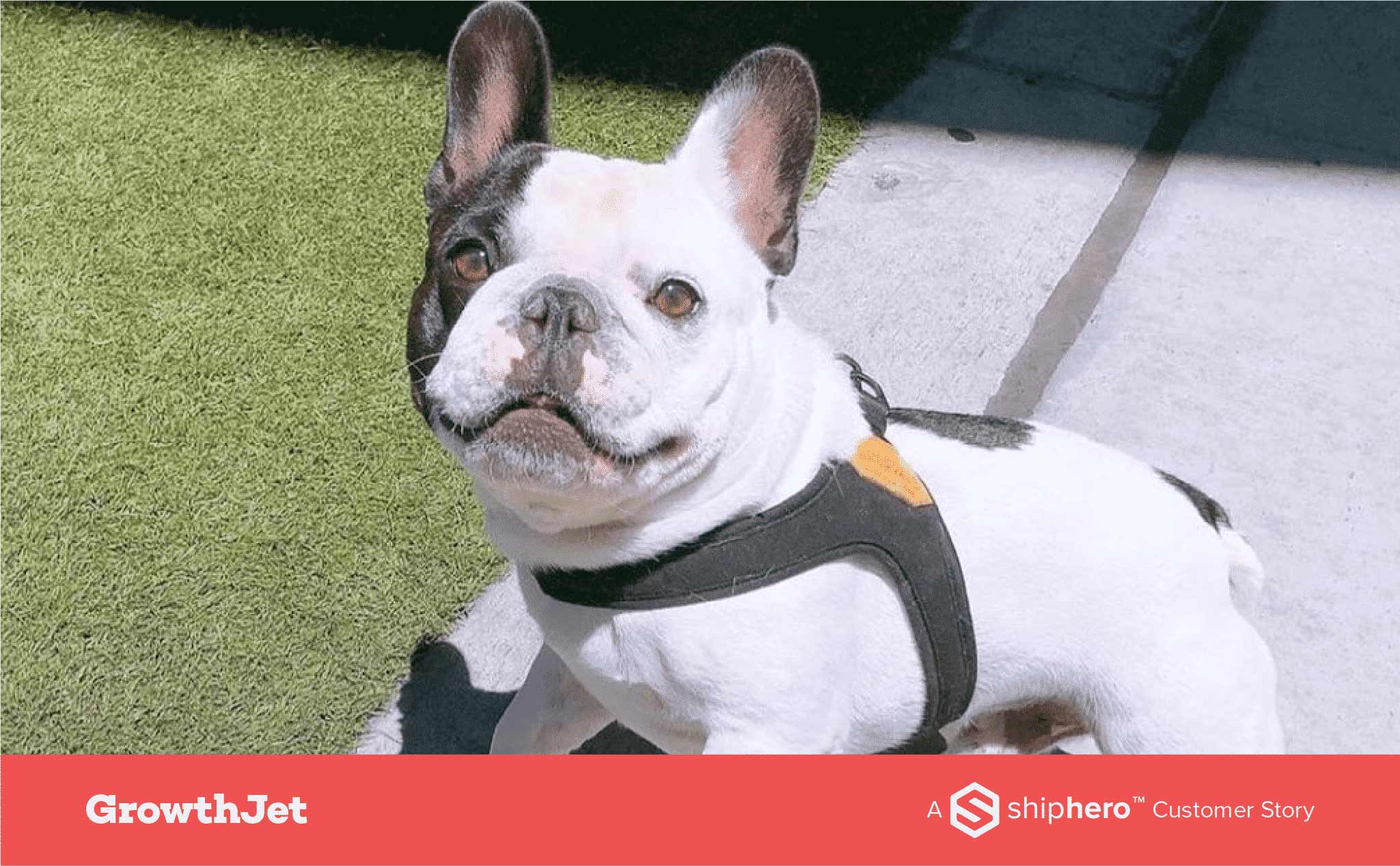
Follow Humphrey and the Spotted By Humphrey’s journey at their website and Instagram.
Website: https://spottedbyhumphrey.com/
Humphrey’s Instagram: https://www.instagram.com/spottedhumphrey/
Spotted By Humphrey Instagram: https://www.instagram.com/spottedbyhumphrey/
Want to be featured in our case study?
If you would like to share with us stories about your ecommerce experiences, whether it’s how you started your business, what opinions you have on the stories we share, or if you just feel like venting… we’re here for you.
Shoot us an email and you could be featured on an upcoming Case Study, our critically-acclaimed weekly news segment The Packet, or if you’re lucky, you could be invited to join one of our many Podcast episodes!
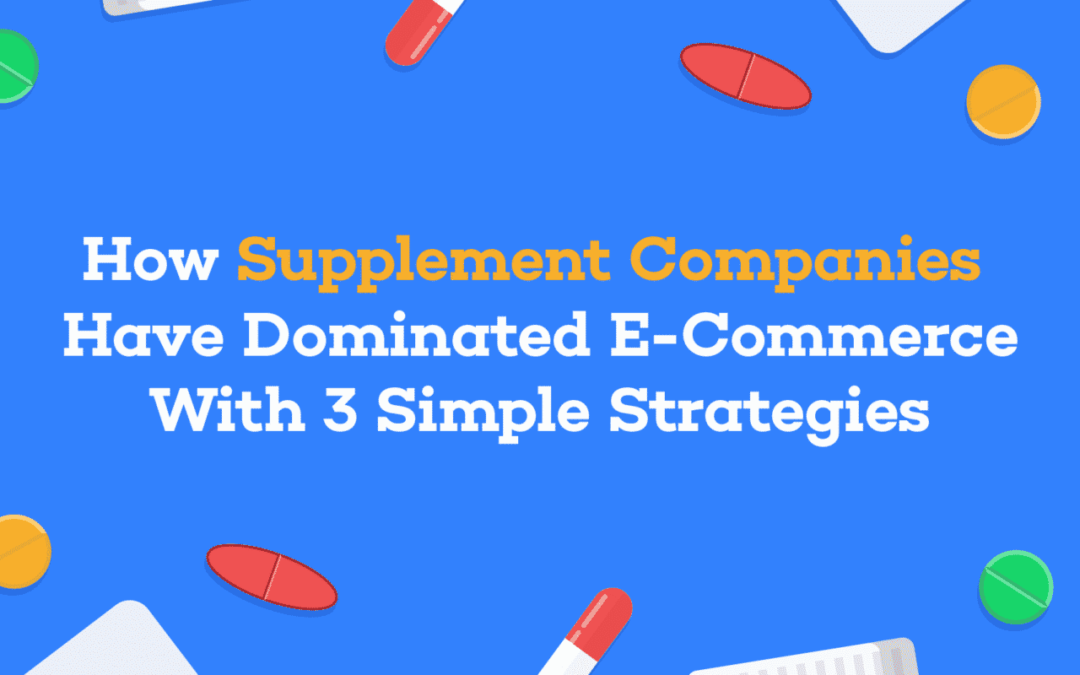
Feb 24, 2021 | Best Practices, Blog, Warehouse Management Software
Look at those gains, bro. Over the last year, the dietary supplement industry has boasted bulging sales growth of 40%, outpacing overall e-commerce by 12%, and they swear it’s all-natural…
The pandemic has certainly brought more awareness to immunity, and overall health and wellness; in fact, 77% of American adults consume dietary supplements, and the average American spends around $56 per month on dietary supplements.
Of course, there are other ways to increase immunity and health, such as at-home workout products and healthy meal kits, but those haven’t grown at nearly the same rate as supplements. So that begs the question…
How have supplement companies dominated e-commerce?
After searching through the supplement industries’ gym bag of secrets, we found that the true secret to their success with the injection of three strategies:
(Serving size: one scoop of each)
- The Subscription Model
- Bundles and Stacks
- Smart Fulfillment
Disclaimer: Ingestion of the following strategies will give you and your e-commerce business a sick pump.
Strategy 1: The Subscription Model
The Subscription Model, or “Subscribe & Save”, is where customers subscribe to weekly, monthly or seasonal purchases and receive discounts upwards of 15% off. Think content streaming services like Netflix or Hulu, recurring subscription box companies like BirchBox, and more recently, supplement and vitamin companies.
Companies that employ the subscription model offer recurring products or services, rather than the traditional, one-time transaction. Brands and businesses that have utilized this approach have reported better customer relationships, improved aggregate data, and more diversity in product offerings.
Turn Customers in Subscribers
Most large companies report that new customers only generate 15 to 25% percent of their revenues, which means that return customers generate the bulk of the revenue. Focusing on return customers and subscribers reduces acquisition costs of targeting new customers, while cultivating brand loyalty.
Gather More Fruitful Customer Data
As reported by Shopify, modeling and storing subscription data allows your company to better engage with your audience and create targeted content along the customer journey.
In fact, many large brands develop separate marketing strategies for subscribers and non-subscribers, as well as strategies to convert non-subscribers to subscribers, including email campaigns and targeted discounts for subscription and account creation.
Sell the Same Product in Multiple Ways
The subscription model gives brands the creative freedom to understand how their customers would prefer to engage with their products and services.
Beyond the price discount, supplement companies could offer subscribers access to free delivery, early bird offers, free trials or samples, gifts with purchase, and much more. As you learn from your subscribers, you are free to adjust your product offerings to better meet their needs!
If you want to learn more about how to create a successful subscription model, check out our blog.
Strategy 2: Bundles
Bundles, or as they’re called in the dietary supplement industry — stacks. Supplement stacks are a bundled variety of supplements for one specific health goal; for example, popular supplement stacks are for the ketogenic diet, weight loss, muscle gain and more.
Bundling products allows companies to cross-sell, provide a more convenient shopping experience, and give customers more flexibility.
Cross-Sell
Bundles are the perfect way for supplement companies to cross-sell products. By intelligently combining multiple products into one item, supplement companies bundle their popular and top-selling supplements with products that normally might not sell on their own (looking at you L-Carnitine). Also, if you have multiple flavors of a gut-drink for example, you can bundle together a variety pack!
Convenience
With just one click, customers can purchase all the supplements that they need. And if you are using the subscription model, their supplements will be auto-fulfilled based on their desired cadence!
Flexibility
Some supplement providers like G Fuel offer their customers the flexibility of building their own bundles — BYOB but healthy!
Strategy 3: Smart Fulfillment
Any supplement company can promise a lucrative subscription model with convenient and flexible bundling options; but in reality, these are extremely complicated to pull off without the right inventory management and order fulfillment process.
In fact, most 3PLs and fulfillment providers simply don’t offer the customization and bundling options that supplement companies need. That’s why you need to supplement your business with the right fulfillment provider.
Convenient Bundling
Through traditional fulfillment methods, creating and shipping customized bundles, kits or bulk orders can be highly complex and downright costly. By offering a subscription service, your brand can sell a variety of items in a variety of ways, so brand owners must be able to group orders quickly and pick a lot of the same product at once, making the fulfillment process quick and simple.
That’s why ShipHero is dedicated to supporting our subscription-based and bundle supplement companies with our newest capability, BulkShip!
BulkShip is an intuitive interface to design preassembled bundles of products, such as a BodyBuilding Stack or a more flexible bundle that would get assembled at fulfillment – like the Build-Your-Own-Bundle option.
Safe Storage and Transport
Supplements must be stored in cool, dry areas, or they risk discoloration, odor, and deterioration. Make sure that your fulfillment provider can take the necessary precautions to protect your inventory in a safe, secure, and climate controlled environment, and take care during the transportation.
Reliable Shipping
Supplements and vitamins are taken regularly and on set cadences, so having a reliable shipping carrier with built-in resiliency is of the utmost importance.
This year has shown that even the most popular carriers, FedEx, UPS and Amazon, are all subject to delays and unreliable shipping times. That’s why ShipHero has seen a huge surge of supplement companies looking to diversify their shipping methods, so that their customers and subscribers receive their supplements when they’re supposed to.
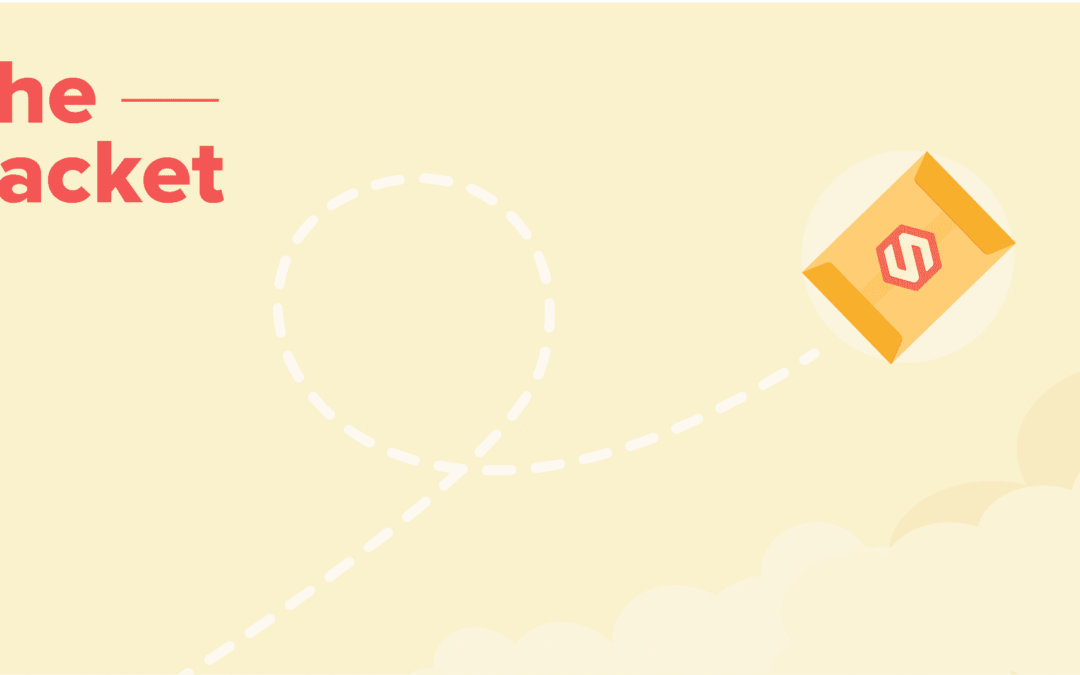
Feb 26, 2021 | Blog, The Packet
Front and Center
Dirty Porch Pirates
E-commerce has certainly been in the spotlight this past year, but who has really been stealing the show? Thieves, of course. Package theft is on the rise, as illustrated in a recent report, which showed that approximately 43% of Americans reported having a package stolen, a 7% increase from 2019. Of these theft victims, 64% of them say they’ve had packages stolen more than once. What’s to account for the rise in theft?
More Opportunity
Approximately 59% (+5% YoY) of Americans receive a package at least weekly, and 10% (+5% YoY) receive a package daily. That’s way more packages being left on the doorstep, and although the average value of the items has decreased, this does not seem to stop porch pirates from throwing up their hood and grabbing what they can.
http://https://www.youtube.com/watch?v=a_TSR_v07m0
ICYMI: Watch the amazing Glitter Bomb 2.0 vs Porch Pirates video
Who’s liable?
“YOU ARE GOING TO PAY FOR THIS!” you may have exclaimed to the heavens when you watch a thief grab your $3 toe clippers on your home security system. “But, who actually pays for this?”, you may have wondered as you pace around with your hawk talons clacking against the hardwood floors. (true story)
Well the answer is, if the shipper says that the package was delivered and the buyer states that it was not received, the seller is no longer liable. However, in most cases of a stolen package, the retailer or seller issues a refund or agrees to replace the item to preserve their customer experience. Amazon’s A-Z Guarantee program pretty much guarantees that purchases made from their retail partners will almost always be refunded or replaced if the package goes missing.
Some businesses may ask customers to file a claim with the shipper before issuing a refund or replacement.
What about package insurance?
For sellers, traditional shipping carriers such as UPS, USPS, and FedEx offer optional shipping insurance for a fee; however, this only covers so much. FedEx caps their liability at $100 and will only increase this if the package is packed and shipped at a FedEx location. Even then, it only increases to $1,000 for items like jewelry, artwork, collectibles, and antiques.
What can brands do?
Ultimately, the brands are responsible for making sure that their products reach their customers. So besides installing guard dogs as a nice ‘gift with purchase’, the most effective way that brands can combat package theft is to offer customers more ways to receive their products. The most common have been curbside pickup and local delivery. You can also schedule for in-person delivery and require signatures.
When deciding to outsource your fulfillment, be aware of your 3PLs Terms and Conditions surrounding stolen goods, and ask what your fulfillment provider can do. For example, in the case of stolen goods, ShipHero files claims with Carriers on your behalf, up to a certain value. Read more about ShipHero Fulfillment’s stolen goods FAQ here and our T&Cs.
Back of the Packet
Ammonia Side Here
According to the International Maritime Organization, international shipping contributes ~3% of annual carbon-dioxide emissions. To combat this, shipping companies seek to replace petroleum with a new fuel source, ammonia (NH3).
Why ammonia? Well… *deep breath in* this colorless fuel emits no carbon dioxide when burned, It’s abundant, it can be made using renewable electricity, water, and air, both fuel cells and internal combustion engines can use it, it doesn’t have to be stored in high-pressure tanks or cryogenic dewars like hydrogen, and it has 10 times the energy density of a lithium-ion battery.
The only problem is that no shipping carriers today are equipped to use ammonia as a fuel source. But by 2024, Viking Energy is set to become the first shipping vessel propelled by ammonia fuel cells, powered by several Norwegian-based companies.
NASA Perseverance and an Early Easter
NASA successfully landed their Mars Rover, Wall-e — I mean, Perseverance on the Red Planet last week. The videos of the landing immediately went viral, and in typically nerdy fashion, people began uncoding Easter Eggs hidden throughout the footage. In one such hidden message, the parachute was allegedly stitched in binary code that read “Dare Mighty Things”, a quote from President Teddy Roosevelt.
USPS Unveils New Trucks
And they’re cute as hell.
ShipHero News
NEW CASE STUDY ft. Spotted by Humphrey
What would you do if your dog became an internet sensation? Well, that’s what happened with ShipHero customer Yong-Soo and his French Bulldog, Humphrey!
Spotted By Humphrey – “with its quirky name for a shop that has the personality to match” – is a community-driven online destination for dog parents around the world who are looking to find something special and unique for their dogs.
Learn how they turned Instagram fame to a successful ecommerce business with our newest doggone ShipHero Case Study.

Gains, Bro
Need a sick pump for your e-commerce business? Learn how the dietary supplement industry used three simple strategies to get bulging revenue gains of over 40% this year, outpacing overall e-commerce by 12%… and they say it’s “all-natural”.
Multimodal vs. Intermodal Transport
These days, your products probably travel more than you do… But don’t be jealous, multimodal and intermodal fulfillment options are becoming more common as technology allows for seamless communication between carriers. On our Shipping Methods Explained series, we deep-dive into Multimodal vs. Intermodal fulfillment options, so you can determine if it’s right for your business.
ShipHero’s Innovation Wheel: Automation
Are you bogged down by the day-to-day tasks of running a business, desperate for time to focus on your strategy? Automation is the answer you need, and your fulfillment provider should be just the one to provide it. In ShipHero’s Fulfillment Innovation Wheel series – Automation, we give a glimpse into our Automation Cookbook to show you how automation can improve your speed and efficiency.
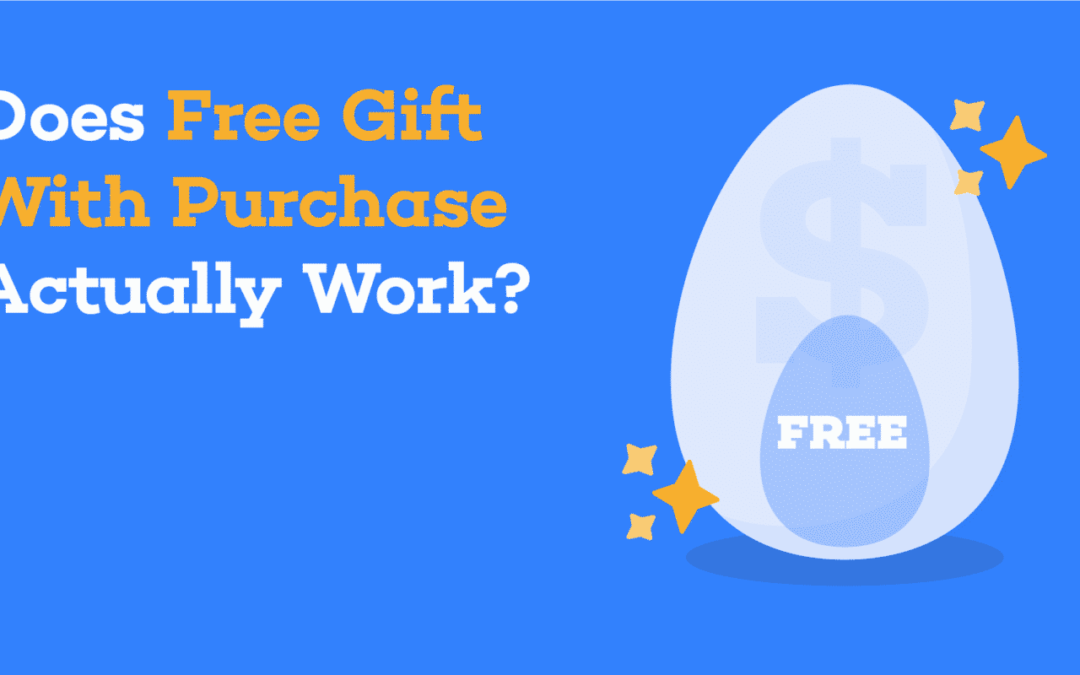
Mar 1, 2021 | Blog, Warehouse Management Software
Today we venture deep into the minds of our customers to answer the age-old, controversial marketing question: does offering a “free gift with purchase” actually do anything?
Spoiler alert: yes, it does… but it doesn’t have the effect that you may expect.
Using case studies and scientific research, let’s look at the psychological effects of the free gift with purchase (GWP) to determine if it’s right for your business, or if there are more effective promotional campaigns.
The “Free Gift With Purchase” Effect
First, why do companies provide a free gift with purchase? What are they trying to achieve?
Online retailers that offer a free gift with purchase (GWP), which is less than 50% of companies, believe that the added value of a free gift will inspire repeat purchases, increase brand loyalty, and stimulate social and word-of-mouth advertising. Companies that offer free GWP include:
Kinder (confectionary) — free toy
Eileen Fisher (apparel) — free organic ditty bag
Bentley (cologne) — free chrome Bentley key ring
And more…
These case studies have been reported by companies that specialize in creating customized GWP for their clients, but do the benefits hold up under scientific scrutiny?
Does GWP Have Scientific Backing?
The answer… yes, but not how you’d expect.
As retailers constantly innovate promotional offers to provide more value to their customers, the “two items for the price of one” sales method has been framed using two distinct promotional tactics: the free gift, and the bundle… and it turns out how you frame the exact same deal actually has different psychological effects on your consumers.
For example, if your business sells household supplies, your promotions could be either:
- “Buy a mop for $20, and get a bucket free!” — the free gift
- “Buy a mop AND bucket for $20!” — the bundle
Studies have shown that bundle offerings and free gift offerings tend to influence the perceived value of products themselves, rather than their opinions of the company offering the gift. Also, the promotional frame has an impact on product return rates!
Effects of Gift with Purchase
With a free gift promotion, the “free item” or “gift” is perceived as less valuable by the customer, while the focal item is valued more. Therefore, customers are less likely to buy the free item after the sale, but more likely to purchase the main item.
Of course, the likelihood of repurchase is directly related to how effective the gift promotion is in increasing the value of the main item, so if that value increases to surpass the customer’s intrinsic repurchase threshold, then they will buy again.
Additionally, with a free gift promotion, customers are less likely to return an item, because the perceived loss of giving back a “free” item is too high.
Effects of Bundle
In a bundle promotion, the opposite is true. The main item is perceived as less valuable, while the bundled item is valued more. Therefore, customers are less likely to purchase the main item as a single item, but the supplementary item is more likely to be purchased as a standalone
With a bundled promotion, customers do not mind returning an item included in a bundle.
TLDR; offer free gift promotion if you want to reduce return rates and sell more of the main product at the expense of the gifted product; offer a bundle if you want to sell more of the supplementary product at the cost of the main product.
In Conclusion
The proven effects of “free gift with purchase” promotion are not proven to inspire net-increase in repeat purchases; rather, the promotion should be used to increase/decrease the perceived value of one focal item at the expense of a supplementary item. Also, the free gift promotion reduces actual return rates as well as the customer’s desire to return.
HOWEVER, these studies imply only the probability that customers purchase again, and this likelihood varies based on the personalization and relevance of the free gift and/or bundle.
That’s why there exists a vast amount of consumer data analysis tools and companies that make large profits off of customized gifts with purchase.
P.S. Children are the Future… of GWP
There does exist a customer group where the free gift with purchase has had immense, proven success: with products geared towards children.
You’re certainly familiar with the Happy Meal toy, which was so effective at marketing to children that McDonald’s was sued by a California mother in 2010 who claimed that the fast food chain used toys to unfairly attract children.
In the listed case study above, Kinder successfully offers a free child’s toy with purchase of chocolate, and there exist highly lucrative marketing teams like Kidoz that offer safe advertising and Gift With Purchase creation for children.
The positive results from a child-facing GWP campaign stem from two main factors:
- Children perceive a free gift as more valuable than adults
- Because adults are the ones delivering the gift to their child, the child’s joy adds to the value of the product for the parent
We’re not saying all GWP campaigns should be geared towards children, it’s just that these are the only ones with a proven record for having net-increases in repeat customers and word-of-mouth advertising (they’re lovin’ it).
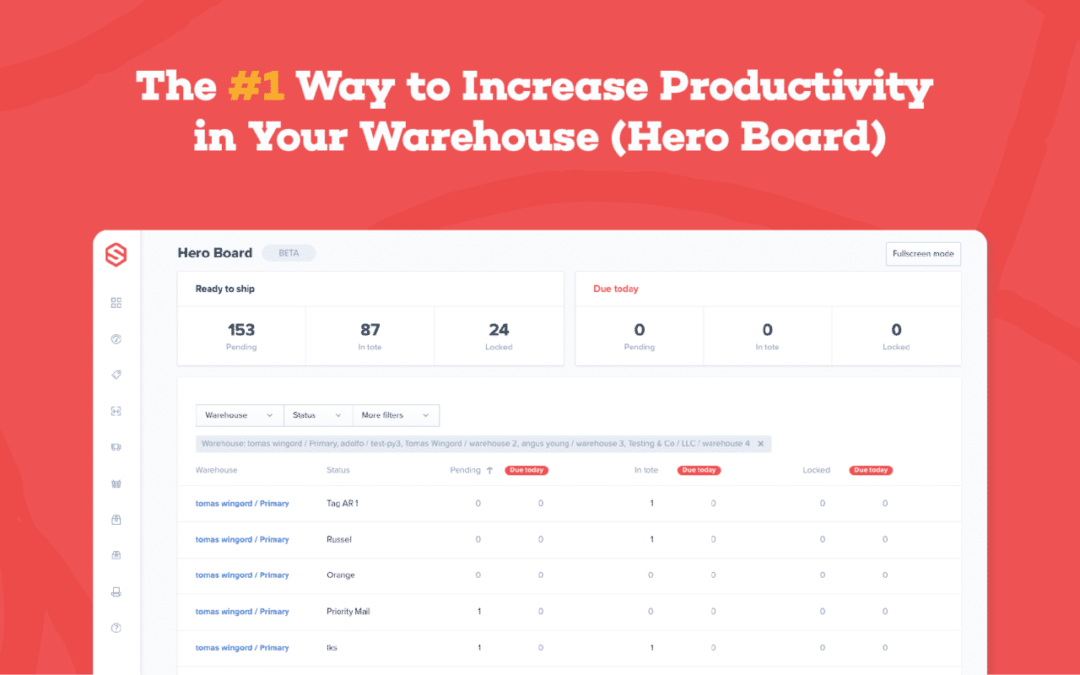
Mar 4, 2021 | Blog, Warehouse Operations
Want to know the most effective and the most important step towards optimizing your warehouse output?
There are plenty of opinions on the internet from reliable experts, with “50+ tips for warehouse efficiency”, that cover resolving certain issues or improving minor practices, but we wanted to cut through the noise to find the ONE suggestion that will have the most impact on your supply chain, inventory management and order fulfillment.
We searched for the single pearl of wisdom amongst many best practices and our own warehousing innovations. Notable suggestions to boost warehouse productivity included:
- Create a picking path by location
- Organize bins by popularity
- Separate bulk items from small picks
- Optimize stocking levels for easy inventory rotation
- Incorporate employee feedback to identify bottlenecks
- Reserve capacity for last-minute emergencies
- Track shipping status to predict inventory requirements
While effective, each of the aforementioned suggestions rely on one major capability, and without it, your supply chain will NEVER improve productivity. So, what is the #1 capability for improving your warehouse productivity?
Measure & Benchmark Your Supply Chain
Simply put, your business must have the right tools in place to measure and access vital data relating to the productivity of your warehouse in each departmental area. The quality of the information you receive directly impacts how effectively you set realistic productivity goals and speed up work pace in a sustainable manner.
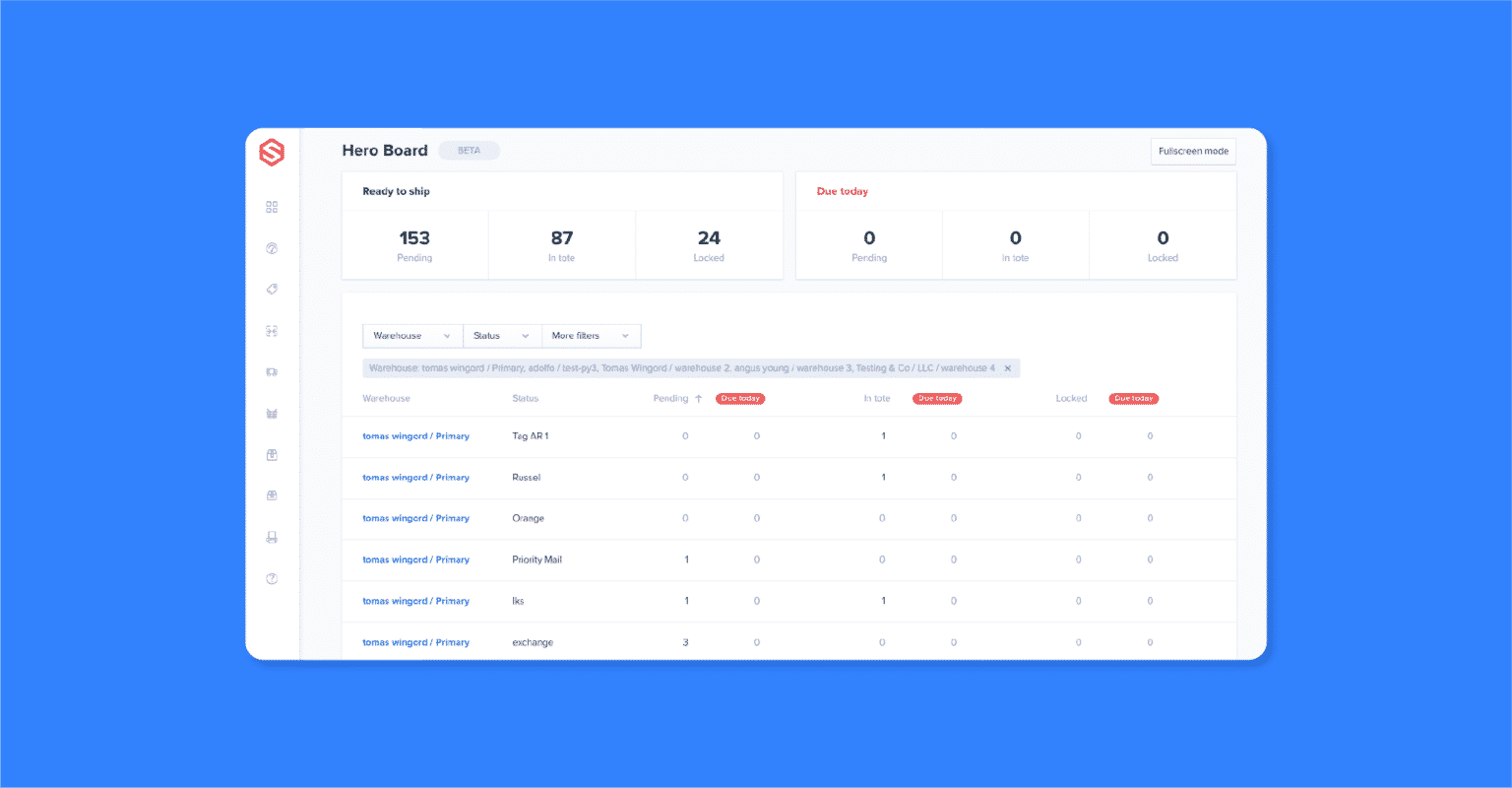
Picking, packing, and inventory replenishment are the three areas of focus when beginning to make systemic improvements to your warehouse. It’s important not to measure everything at once; rather, start by identifying your biggest cost-drivers or bottlenecks and address those first, such as labor hours, units of work, etc. In each area of focus, ask yourself the following questions:
Picking
Picking is the process of walking through the warehouse and selecting products that constitute one or more orders. You can begin measuring this process by asking the following:
- Picking time and routes: Do you know how long it takes to pick items and complete orders? What routes to pickers take? Are picking routes efficient?
- Worker productivity: Who are the workers that are more productive and less prone to errors? Are you compensating these workers accordingly? Are you properly staffed?
- Warehouse layout: What are your most-picked products or combination of products? Do you adjust SKUs based on sales velocity to reduce picking time?
- Employee suggestions: Are you listening to your employees? Do you have a place to log their suggestions and take action?
Packing
Packing is the process of verifying the order contents and putting the ordered items into the shipping package. You can begin measuring this process by asking the following:
- Overall evaluation: Every operation is different. What are the major factors that make or break the speed of your packing operation?
- Workstation design: Is your workstation designed as efficiently as possible? Are there improvements to be made to the top size or worker spacing?
- Material availability: Are cartons, inserts, and any personalization items available and sufficiently stocked at each station?
- Automation opportunity: Are there processes that can be automated, such as envelope insertion, box building, etc.
- Employee suggestions: Are you listening to your employees? Do you have a place to log their suggestions and take action?
Inventory Replenishment
Inventory replenishment is the process of restocking bins with products so that orders can be picked, and errors in replenishment can result in serious cascading bottlenecks in the picking and packing processes. You can begin measuring this process by asking the following:
- Replenishment levels: What inventory levels trigger your restocking process? Are these built to scale with bulk orders?
- Distribution duration: Is your replenishment process intelligently informed by manufacturing and distribution times? Does your network of warehouses communicate to overcome any unexpected shortages?
- Employee suggestions: Are you listening to your employees? Do you have a place to log their suggestions and take action?
The most efficient supply chains run on information. The key to improving warehouse productivity is asking the right questions, measuring the actual outcome, and planning for incremental improvements. Without measurements and benchmarks, you will be stuck reacting to issues, rather than proactively planning and systematically working towards a better warehouse.
ShipHero’s HeroBoard
ShipHero WMS constantly strives to provide you with the information that you need to make intelligent decisions regarding your warehouse management and order fulfillment. That’s why we built the HeroBoard — a personalized dashboard designed to give an at-a-glance view of your fulfillment operations.
The HeroBoard overview dashboard refreshes every 30 seconds for real-time monitoring of your shipments. Want to get into the specifics? HeroBoard users can easily drill down into specific order information for better customer service and flexible decision-making.
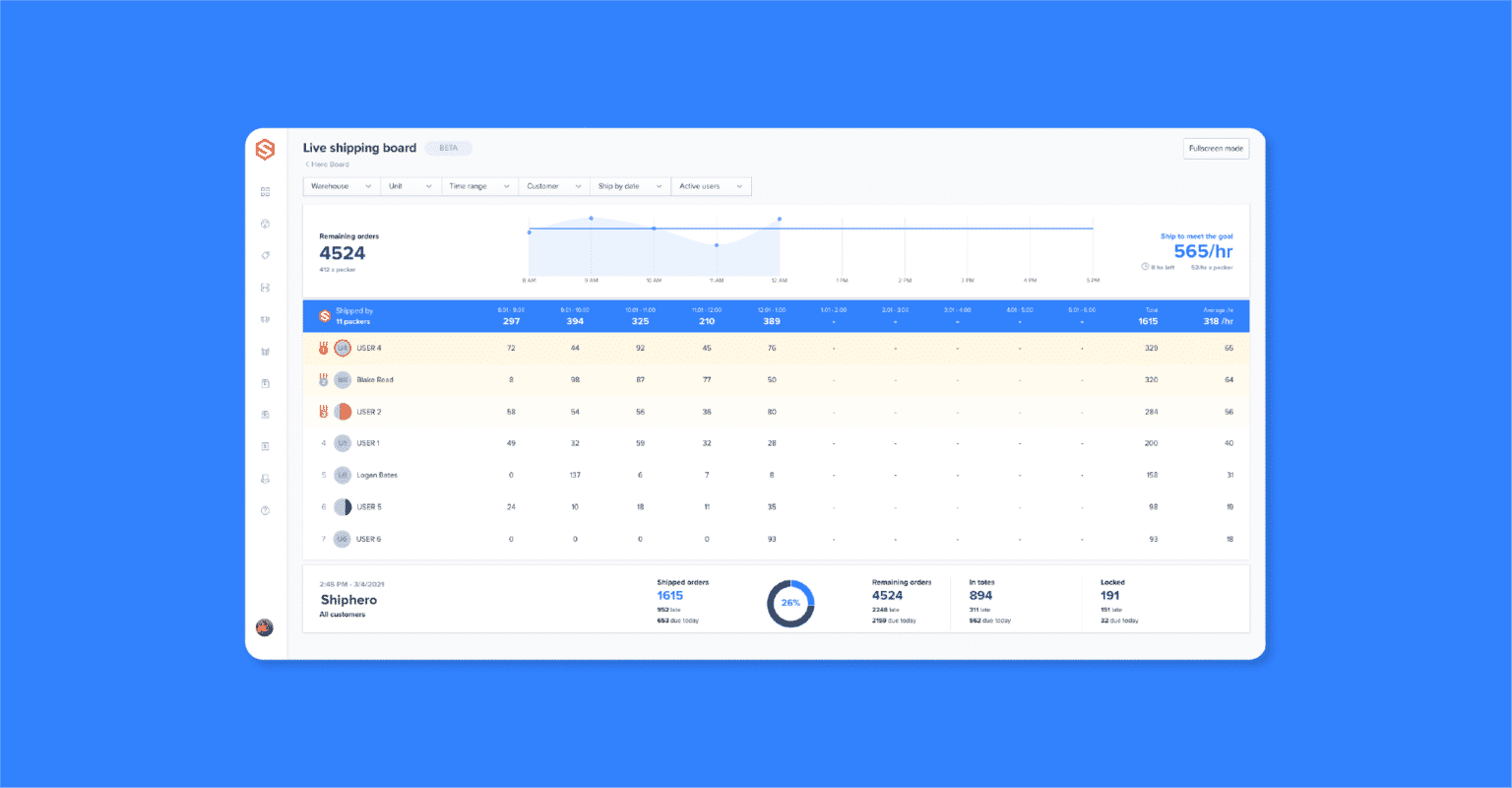
The Live Shipping Board is the newest update to the HeroBoard that gives you a view into the stats for each packer, remaining orders, and more!
Schedule a demo today.

Mar 5, 2021 | Blog, The Packet
Front and Center
Shipping’s Decarbonization Starts Now
Sustainability has reared its beautiful head towards the supply chain industry, and started with its biggest polluter, ocean shipping. In what has been dubbed shipping’s decarbonization ‘moonshot’, a $5 billion proposal has been formally sent to the International Maritime Organization (IMO), calling for mandatory contributions from every shipping company in the world at approximately $2 per tonne of bunker fuel.
The proposal, backed by all major global shipping associations, aims to quickly advance R&D for zero-carbon maritime technologies and the development of working prototypes, as well as CO2 reduction projects in developing countries.
In a joint press release from nine of the world’s largest global shipping companies, they state “zero-carbon technologies do not yet exist that can be applied at scale to large ocean-going ships. A well-funded R&D programme, which the industry has agreed to pay for within a global regulatory framework, needs to commence immediately under the supervision of the UN IMO.”
Don’t Call It a Tax
Since the European Parliament voted to include the shipping industry in their 2022 carbon market, and also backed a -40% greenhouse gas efficiency target to be reached by 2030, the US and China have also been evaluating similar emissions trading schemes.
Shipping associations hope that this proposal will curtail regional legislation efforts that would impose higher carbon taxes and more stringent regulation. Some environmental groups have claimed that this “moonshot” and $5 billion figure is much too small, and merely a tactic to avoid government interference
IT’S HAPPENING!
Yes, it is. With this proposal, the shipping industry must pay, one way or another, for their carbon footprint. It won’t be long for the spotlight to shine on the rest of the supply chain, and it is put under the same scrutiny as shipping. The proposal backers hope to get it ratified at the next IMO’s Marine Environment Protection Committee (MEPC) later this year. If you haven’t already looked at the sustainability of your supply chain, now is the time.
Back of the Packet
Sweet Relief Package
On Wednesday, the final version of President Biden’s $1.9 trillion coronavirus relief bill (AKA the American Rescue Plan Act) was approved by the House and sent to Biden’s desk for signature.
The American Rescue Plan will send $1,400 in direct payments to those with an annual salary up to $75,000, and it also includes:
- $350 billion for state and local governments aid
- $14 billion towards vaccine distribution
- $130 billion to schools for safe reopening
- $300 billion in weekly jobless benefits through September
- Expanded tax credit of up to $3,600 per child, which could raise 4 million children out of poverty.
Aaahhhh, sweet economic stabilization.
Unwelcome to Walmart
Walmart announced that they will be repurposing one North Dallas location into a fulfillment center dedicated entirely to online delivery and curbside pickup, with no more in-store shopping. As a proverbial canary in the low-price coal mine, this could signal a permanent shift towards local delivery and curbside pickup over conventional brick-and-mortar shopping.
Continuing their effort to modernize and keep up with eCommerce culture, Walmart has begun offering free samples with their grocery pick-up and also for customers that sign up for the Walmart+ subscription service.
Buddha-ful Statue
What’s trending on China’s online shopping platform Taobao? A statue of Trump as Buddha with the slogan ‘make your company great again’, of course! A Trump toilet brush is also among Taobao’s top-rated Trump-related merchandise.
ShipHero News
Episode FORE: Objects! With ShipHero
Quiz for the true golfers: Cabretta leather is obviously the key ingredient for golf gloves… but did you know it’s not actually leather? Learn with us on Episode FORE of Objects! with ShipHero the rough business of golf gloves with Adam Karger, co-founder of Scotch & Skins. And remember: if the glove don’t fit, you must check out Scotch & Skin’s line of premium golf gloves and accessories.
Influencer’s Guide to Becoming a CEO
Success stories of influencers turned CEO exemplify the new American Dream. Just look at our adorable canine friend Humphrey and his owner’s brand, Spotted by Humphrey! Learn how to monetize your brand and engage with your audience with The Influencer’s Guide: How to Become a CEO Using Private Labelling.
ShipHero’s Innovation Wheel: Sustainable Fulfillment
Does Greta Thunberg haunt your dreams? Maybe it’s time your business starts cutting down its packaging and supply chain waste. Learn how with ShipHero’s Fulfillment Innovation Wheel series — Sustainable Fulfillment.















